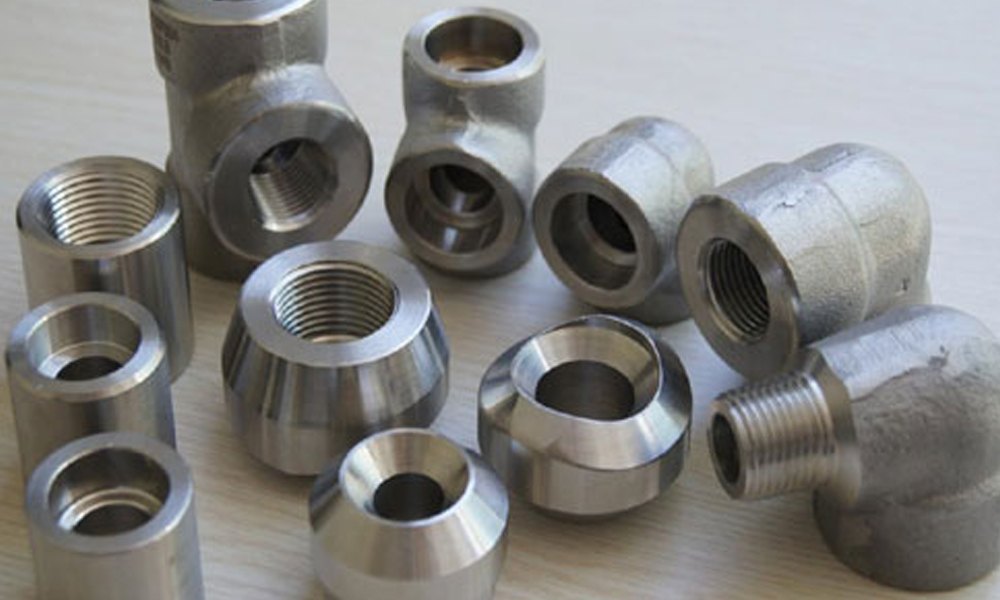Forged fittings are crucial components in piping systems, widely used across industries like oil and gas, petrochemical, power generation, and construction. These fittings are crafted through a process where metal is heated and then shaped under pressure, resulting in a more robust, durable, and high-strength component compared to other methods of manufacturing, such as casting. The forging process enhances the mechanical properties of the material, making forged fittings suitable for high-pressure and high-temperature environments.
In this blog, we will explore the different types of forged fittings, their applications, and why they are often preferred in certain systems.
1. Forged Elbows
Forged elbows are among the most commonly used forged fittings in various piping systems. They allow for a change in the direction of the pipe, which is essential for achieving desired flow patterns or avoiding obstacles.
- Types of Forged Elbows:
- 45-Degree Forged Elbow: Used for moderate directional changes, typically in systems with lower pressure.
- 90-Degree Forged Elbow: The most common, used for sharp directional changes in both low and high-pressure systems.
- 180-Degree Forged Elbow: Used for U-turns or to reverse the direction of fluid flow.
- Applications: Forged elbows are used in pipelines where fluid or gas flow needs to be redirected, such as in HVAC systems, industrial processing plants, and power plants. They can handle high-pressure applications and are ideal for systems with high flow rates.
2. Forged Tees

Forged tees are used when it’s necessary to branch off a pipe or combine multiple flows into a single pipeline. They are available in both equal and reducing designs, with the equal tee having branches of the same diameter as the main pipe, and the reducing tee offering a branch with a smaller diameter than the main pipe.
- Applications: Forged tees are used in systems where multiple flow paths are required. They are common in water treatment plants, chemical plants, and oil refineries. The reducing tee is particularly useful for pressure regulation in smaller branches, while the equal tee is employed when all branches need to have the same flow rate.
3. Forged Couplings
Forged couplings are fittings used to connect two pipes of the same or different sizes, allowing for the continuation of the pipeline. These couplings come in various types, such as half-couplings, full couplings, and reducing couplings.
- Applications: Forged couplings are frequently used in systems requiring a secure connection between two lengths of pipe. They are found in a variety of industries including natural gas, water, and power generation systems. In high-pressure applications, couplings are used to ensure a reliable connection between two sections of piping.
4. Forged Unions
Forged unions are fittings used to join pipes but are designed to allow easy disassembly when needed. Unlike couplings, which are permanently fixed to pipes, unions consist of three parts—two nuts and a central union body. This allows for a simple and quick separation without cutting or damaging the pipes.
- Applications: Forged unions are common in maintenance applications where pipes need to be frequently disconnected and reconnected. They are ideal for use in systems where frequent repairs or replacements are necessary, such as in water and fuel pipelines or systems dealing with hazardous materials.
5. Forged Caps
Forged caps are used to close off the ends of pipes. They are used to seal the pipeline when no further extension or connection is required. A forged cap can also be used to protect unused pipe openings or as a temporary solution in some systems.
- Applications: These fittings are used in systems where pipes need to be sealed for maintenance, testing, or in systems where a dead-end is required. Commonly used in chemical plants, oil refineries, and plumbing applications, forged caps help maintain the integrity and safety of the system by preventing leaks.
6. Forged Bushings
Forged bushings are fittings used to reduce the size of a pipe and allow for the connection of different-sized pipes. Bushings are usually smaller in diameter than the pipe they are inserted into, making them an excellent choice for converting pipe sizes without major modifications.
- Applications: Forged bushings are essential when connecting pipes of different sizes in applications like industrial systems, petrochemical plants, and water pipelines. They help ensure smooth transitions between pipes of various dimensions and prevent flow restrictions.
7. Forged Swage Nipples
Forged swage nipples are used to connect two pipes of different sizes. These fittings are tapered, allowing for a smooth transition from a larger pipe to a smaller one. They are available in both concentric (equal alignment) and eccentric (off-center alignment) designs.
- Applications: Swage nipples are particularly useful in systems that need to reduce pipe size while maintaining the flow rate. Commonly used in HVAC systems, water treatment facilities, and power plants, they facilitate smooth transitions while reducing pressure loss.
8. Forged Flanges
Forged flanges are circular fittings with holes that allow them to be bolted to other flanged components, ensuring a strong connection between pipes, valves, and other system components. They are available in various sizes and designs, including slip-on, weld neck, blind, and threaded flanges.
- Applications: Forged flanges are widely used in industries that require secure, leak-proof connections. They are used in the oil and gas industry, chemical plants, and water treatment facilities. Flanges are ideal for high-pressure and high-temperature systems, where secure, durable connections are paramount.
9. Forged Adapters
Forged adapters are used to connect two different types of fittings or pipes. These fittings are designed to adapt to different thread types or sizes, making them invaluable when connecting incompatible components in piping systems.
- Applications: Forged adapters are commonly used in industrial applications, including HVAC, plumbing, and water treatment. They ensure that components with different specifications can be securely connected without compromising the integrity of the system.
Conclusion
Forged fittings are vital components that provide strength, reliability, and leak-proof performance in piping systems. Their unique manufacturing process results in fittings that are more durable and capable of withstanding high-pressure and high-temperature environments. Whether you need to redirect flow with elbows, combine flows with tees, or connect pipes with couplings, there is a forged fitting designed for your specific application.
By understanding the different types of forged fittings—such as elbows, tees, couplings, unions, caps, and more—you can ensure that your piping system is not only functional but also safe and efficient. Whether you’re designing a new system or performing maintenance on an existing one, choosing the right forged fittings is critical for ensuring the long-term performance and reliability of the system.






